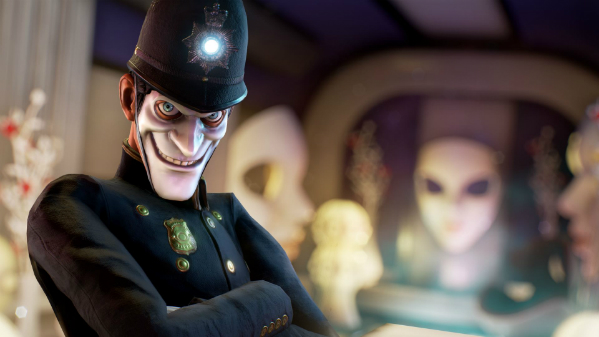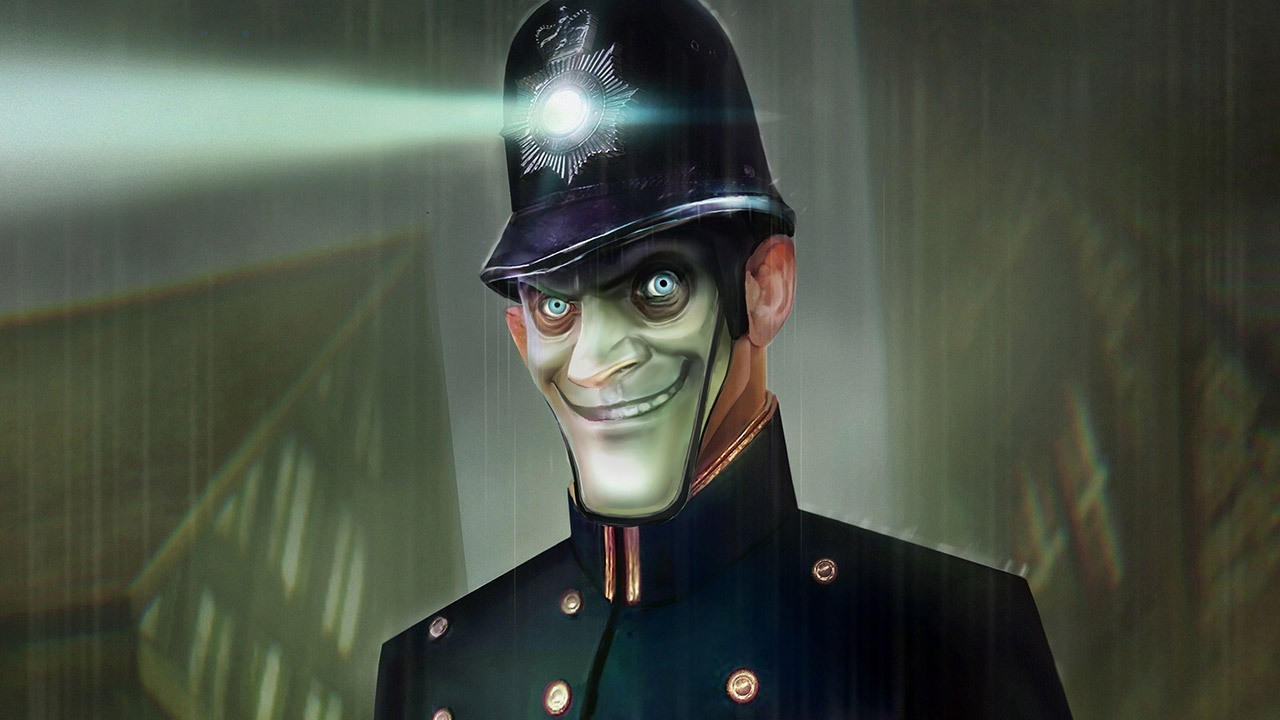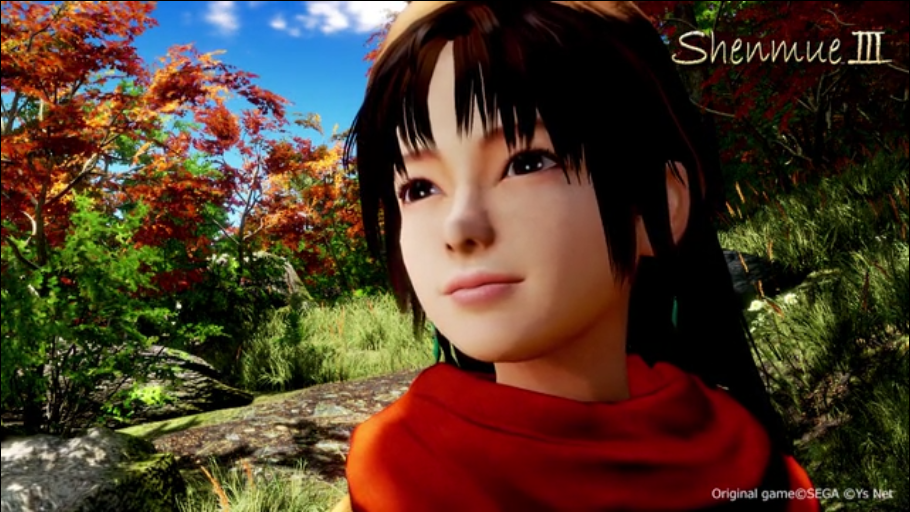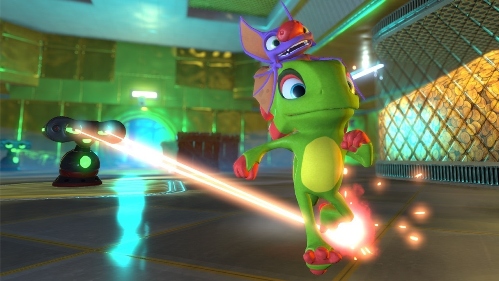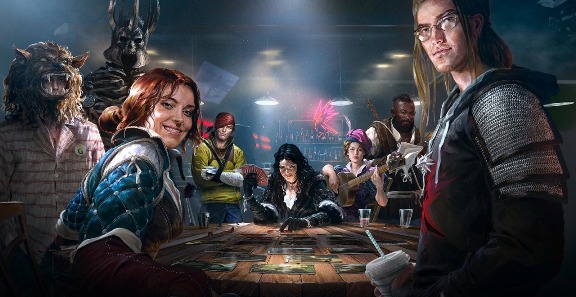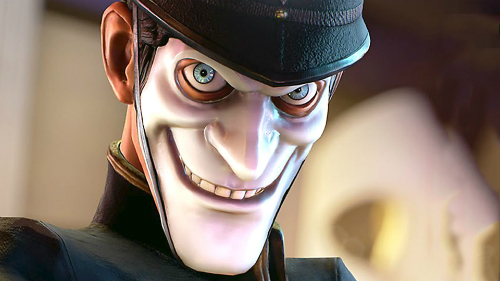
We Happy Few has had an interesting development cycle. Announced at PAX East in February 2015, developer Compulsion Games ran a Kickstarter campaign to help fund the project. Seeking player feedback, Compulsion Games chose to release an early access version of the title on the Xbox One and PC in 2016, which unfortunately did not leave a good impression for some. After years in development We Happy Few has finally been released on PC, PS4 and Xbox One platforms. While it offers an engaging story and lore to discover, the game has a lot of faults which prevent it from being an outstanding experience.
We Happy Few is set in an alternate timeline where Britain has been invaded and occupied by Germany during World War II. The citizens of the fictional British island, Wellington Wells, did a “Very Bad Thing” to free themselves of the German soldiers. Stricken by grief from the “Very Bad Thing”, the citizens developed a hallucinogenic drug called Joy which made them forget unhappy memories and caused them to perceive their surroundings in a positive light. The game itself takes place several years later in the 1960s, and is divided into three chapters. The main chapter focuses on Arthur Hastings, a censorship employee who deletes unapproved news articles from Wellington Wells’ archives. One day Arthur remembers he has a long lost brother and chooses to stop taking Joy to recover his memory and reunite with him. The second chapter focuses on Sally Boyle, a chemist who has created a new (and illegal) brand of Joy. Chapter Three focuses on Ollie Starkey, a war veteran who seeks to uncover the truth of the “Very Bad Thing” and reveal it to the citizens of Wellington Wells. Arthur’s chapter takes about 20 hours to compete, with the other two taking 10 hours each. This does not include completing all side quests.

The chapters entwine at various moments, though they are largely self-contained tales which keep things feeling fresh and interesting for players. What truly shines, however, is the lore of Wellington Wells itself. The game doesn’t actively tell all the details to players, instead relying on you to uncover tibits by reading letters, unlocking short flashback sequences and listening to conversations of NPCs. Before too long you discover a bigger conspiracy than just the “Very Bad Thing”, and come to realise that Wellington Wells is not all it’s cracked up to be. For instance, citizens who refuse to take their Joy are known as Downers and are cast out of the main township. Regular citizens are informed that Downers are on extended vacation, covering up the ugly truths behind the drugged society. It’s difficult to mention specific examples without spoiling We Happy Few, but rest assured those who invest the time to explore will be rewarded with rich lore and a captivating world.
This is, unfortunately, let down by the general gameplay. Players are often tasked to go from area to area, completing glorified fetch quests or simply talk to random characters to find out information. Occasionally there are minor puzzles to solve, such as flipping switches in the right sequence or finding the correct item in a room full of cabinets, but otherwise missions get repetitive.
There are of course dangers to overcome. To name a few, you will encounter gas clouds, electrified water and hostile locals. Gas clouds are easily overcome with a gas mask, while electrified water requires you to find a safe way around or over the water and then deactivate a power switch. The hostile locals is where things get a little more interesting. In Wellington Wells you will have to fit in by changing your clothes to match your location. So, in the main township you will have to dress in “proper” suits, whereas a factory will require you to wear overalls. If you don’t blend in then citizens will grow suspicious of you and ultimately attack.
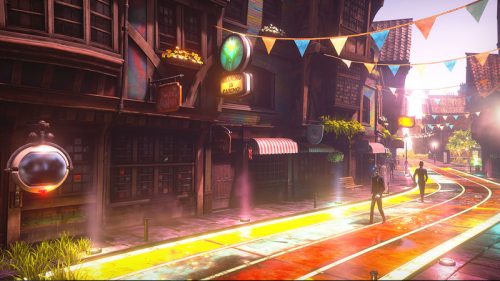
We Happy Few encourages using stealth to reach objectives. If you aren’t wearing the right clothing you can usually sneak around by finding alternative paths or distract NPCs with a noisey object. Combat is also an option, though it is clunky and underdeveloped. Throughout the campaign you will find no shortage of shovels, axes, pipes and bats that can be used as melee weapons. These weapons have basic power and speed statistics, and are controlled using standard attack and block buttons. There are no combos, there’s little difference in how the weapons are used, and it just gets dull. Even worse, the combat system is particularly awkward when fighting multiple opponents. Opponents tend to swarm around you and all attack at once, completely overwhelming you. The game even advises that running away is a valid option, which feels more like a cop out instead of making the combat system more compelling.
The Joy drug also plays a part in your adventure. Throughout Wellington Wells there are various checkpoint stations and areas which can only be entered by Joy-induced citizens. Most of these areas will have alternative routes, though players will have to eventually take the drug. Taking Joy grants you access to the areas and lets you blend in with crowds more easily, but you can potentially overdose and die as a result. You will also have withdrawal symptoms after coming down from a high, where the game world appears darker and NPCs will realise you’re a Downer and attack you. Joy can also cause you to hallucinate, such as making your vomit appear as if butterflies and rainbows are coming out of mouth! It’s funny to an extent, but also does not glorify Joy. In fact, it highlights some of the dangers of real life drug taking.
The open-world map is procedurally generated, meaning that no two playthroughs are ever quite the same. Inside the main townships, players are treated to colourful rainbow streets and neon lights, while outside there is poverty and rundown buildings. While initially contrasting and interesting to explore, blandness quickly sets in. Due to the lack of variety in building facades the streets lose individuality; everything begins to look the same and it becomes difficult to navigate your way around. This is made worse by the lack of a mini-map, so you will be constantly pausing to bring up a map in the menus and re-establish your bearings. There are some unique locales spread about, including a weird sex club, gardens, pubs and few scattered houses that you can break into. Sadly these are far and few between outside the main story missions.
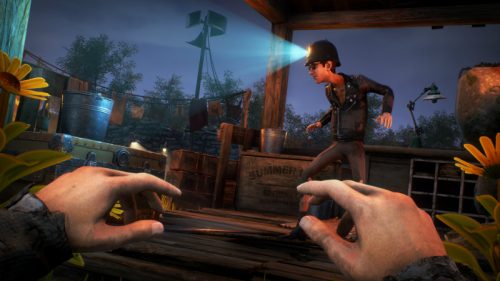
Those who played the early access version of We Happy Few may remember that it had an emphasis on survival. This remains in the final build, but its importance has been reduced significantly. For Arthur, players will receive a buff if they ensure they have gotten enough sleep, food and water. The buff is some extra stamina and being slightly tougher in combat situations. Letting all three meters run dry will penalise the player with the opposite effect, hindering Arthur’s overall strength. Similarly, Ollie needs to have his blood sugar maintained as he is diabetic. I’ll keep Sally’s survival needs spoiler-free as they are plot-centric but are particularly creative. Generally speaking, there are no major consequences if players choose to ignore their survival needs, making the function seem a little redundant. On higher difficulty settings players can make survival more prominent, but this tends to distract you from the story and lore. It is worth mentioning that Compulsion Games plans on adding a sandbox mode in a post-launch update, which will more closely resemble what the early access build promised.
Another major gameplay mechanic is the crafting and looting systems. Almost every nook and cranny, such as bins and dead bodies, will have crafting materials which you can collect to create other items. Some examples include roses which are used to make healing medicines and metal bits which are used to create jimmy bars that will tear down door barriers. Quite often to progress to a new area you’ll have to craft a specific item, so you’ll quickly get into the habit of looting everything you can to avoid unnecessary backtracking. Players do have a restriction on the amount of items they can carry, less they forego the ability to run and fight NPCs. Thankfully you will have access to universal storehouses where you can offload and retrieve loot. Regardless if crafting material is in a storehouse or on your person, you will be able to craft it into an item wherever you are which is smart gameplay design.
Disappointingly, We Happy Few has a lot of annoying bugs and glitches. At random moments NPC animations will freeze but the characters will continue to move around, rain will appear in buildings and characters will occasionally clip together. There’s also times when you will turn away from an NPC, only to turn back and find they have mysteriously vanished. There are also seemingly random framerate drops and there are loading screens when the time of day changes. I haven’t encountered anything game breaking, but it is clear the final product would have benefitted from more time to iron out all these issues.
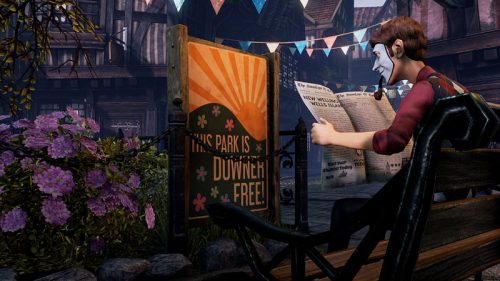
Underneath all the glitches and underdeveloped gameplay mechanics, We Happy Few is actually a decent title. The lore and story are genuinely interesting, while the drug Joy isn’t glorified and makes players consider the consequences of taking it. Unfortunately, it’s clear more development time and a bigger budget were needed to bring this title in line with other heavy hitters.
- Great lore and story - Joy drug is not glorified
- Lots of annoying glitches - Underdeveloped combat system - Streets difficult to navigate due to identical buildings and layouts - Survival mechanics don't have major consequences if ignored

